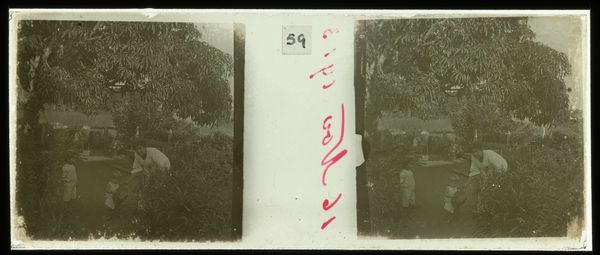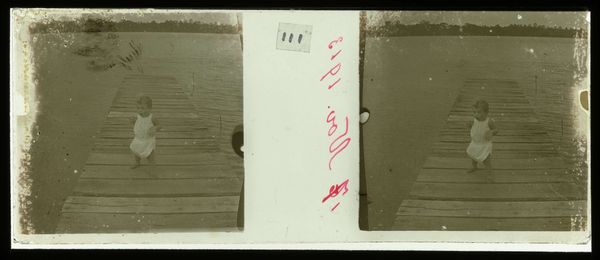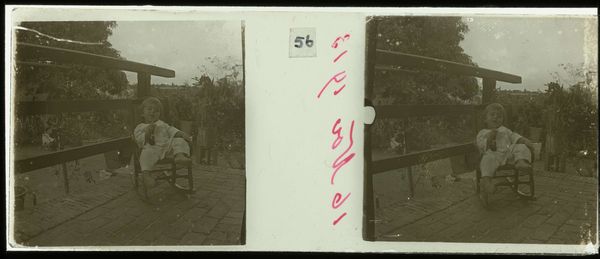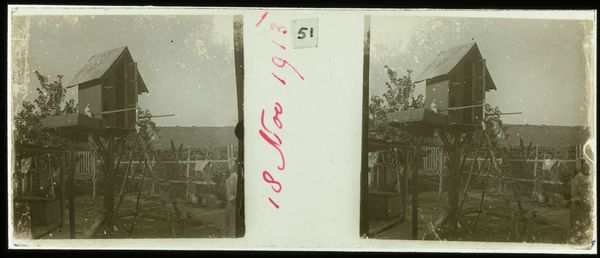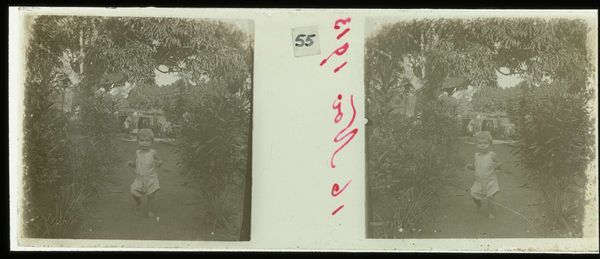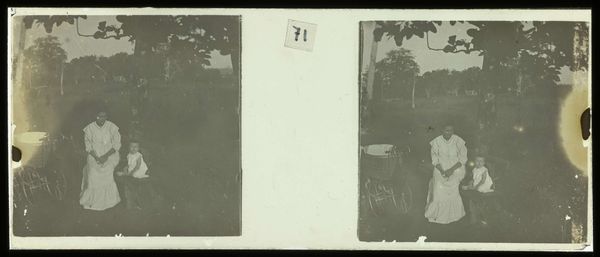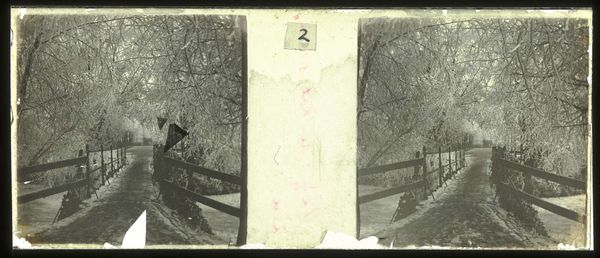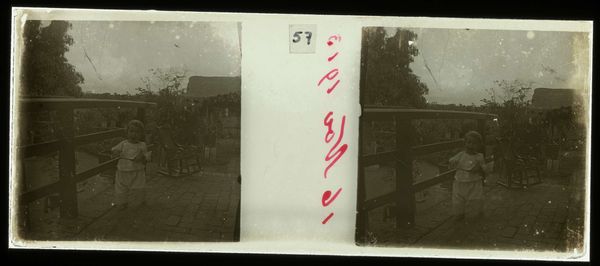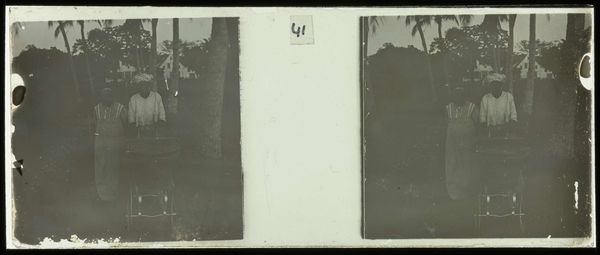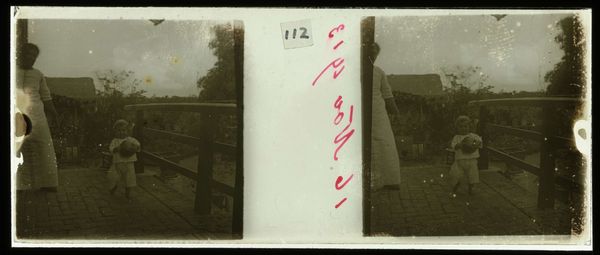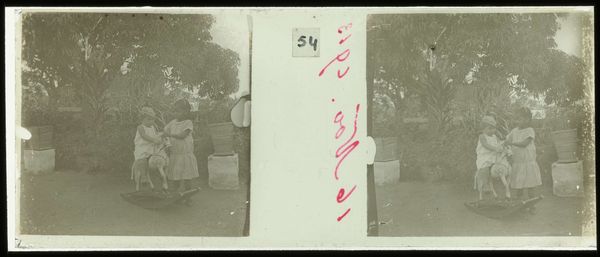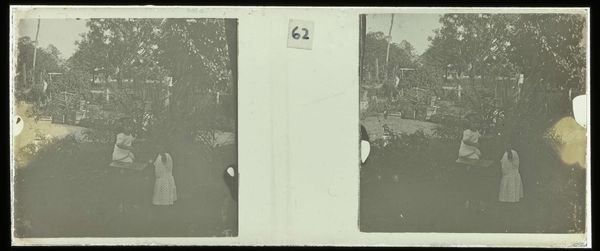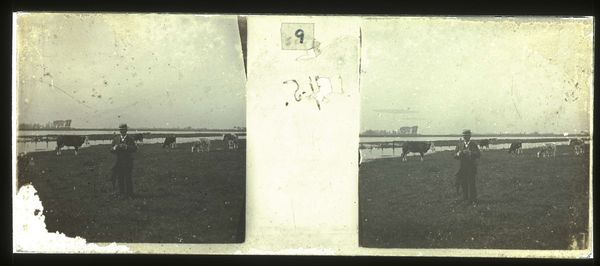
#
photo of handprinted image
#
stencil art
#
pasteup
#
teenage art
#
handmade artwork painting
#
spray can art
#
watercolour bleed
#
watercolour illustration
#
remaining negative space
#
watercolor
Dimensions: height 4.5 cm, width 10.5 cm
Copyright: Rijks Museum: Open Domain
Curator: The work before us is entitled "Plantage Accaribo," and it's attributed to Theodoor Brouwers, possibly dating to 1913. Editor: My immediate impression is one of hazy, faded memory. The sepia tones create an almost dreamlike state, the double exposure adding to that feeling. Curator: It is rather ethereal. Technically, the image is quite interesting. Notice the handwritten annotations across the middle panel, bisecting the scene. They introduce a graphic element, almost like an index to a forgotten filing system. Editor: Do we know what kind of plantation “Accaribo” refers to and what social strata labored in such place? It's impossible not to wonder about the laborers tied to this landscape. We might contextualize the role plantations played within specific histories of the colonial enterprise during the early 20th century. Curator: A critical interpretation is relevant, indeed. Moving to more structural aspects, let’s consider Brouwers’ decision to essentially fracture and mirror the view, which appears as though viewing two similar scenes in stereoscope format. The artist forces our eyes to work. It is definitely not passive observation, this viewing experience. Editor: Quite so. I’m curious about Brouwers' personal background. His lived experience must necessarily affect the production of this kind of historical picture, right? And how can that affect us in this present, right here and now? The composition is, of course, undeniably linked to that personal trajectory… or even trajectories of his family? Curator: Indeed. It is hard not to consider any image’s social impact across time. Still, within the image itself, the repetition is masterful, echoing and amplifying the emotional qualities inherent in the imagery of a specific time. The muted tones further enhance the dreamlike atmosphere, guiding the viewers’ affective reactions and understanding. Editor: It underscores the inherent challenge when encountering these images. The art serves both as historical document and constructed narrative, intertwined with ideology. It is hard not to fall into the allure of beauty. Curator: I find myself also compelled to more analysis through shape and shade as I examine this historical document through our own situated experience. Editor: The act of remembrance and the art in constructing images about memory should definitely force reflection and political action.
Comments
No comments
Be the first to comment and join the conversation on the ultimate creative platform.
